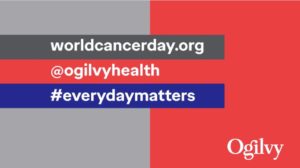 As out of pocket healthcare costs grow, consumers and patients are sometimes faced with the challenge of being able to afford and take their medication as prescribed. Within the past two years, dermatologist Dhaval Bhanusali, MD, FAAD had a situation where he had prescribed an anti-fungal cream to a patient. In a follow-up, he discovered that a treatment that should have cost her less than $8 ended up costing $1,200.
As out of pocket healthcare costs grow, consumers and patients are sometimes faced with the challenge of being able to afford and take their medication as prescribed. Within the past two years, dermatologist Dhaval Bhanusali, MD, FAAD had a situation where he had prescribed an anti-fungal cream to a patient. In a follow-up, he discovered that a treatment that should have cost her less than $8 ended up costing $1,200.
“I have drugs that I used to prescribe to patients that were $4. And now they’re $800 to $2,000. The same drug. It’s getting unsustainable,” he told Business Insider. (In 2019, several lawsuits were filed against multiple generic pharmaceutical manufacturers for alleged price-fixing.) As the Business Insider article noted, “Though [doctors] write prescriptions, most don’t know what drugs will cost their patient. That is, unless they hear back about issues.” Connecting with other dermatologists who were experiencing similar situations with their patients, Dr. Bhanusali ultimately founded Skin Medicinals to help combat this issue.
 The medical entrepreneur had previously launched a platform to compare prices between different local pharmacies as well as an EMR platform for Dermatologists and even helped launch Amazon’s first private skincare brand. Skin Medicinals, an online platform that utilizes compounding pharmacies to specially mix medications for patients, emerged as a result of that work. Dr. Bhanusali is also an instructor in the Mount Sinai Health System and works in private practice in NYC.
The medical entrepreneur had previously launched a platform to compare prices between different local pharmacies as well as an EMR platform for Dermatologists and even helped launch Amazon’s first private skincare brand. Skin Medicinals, an online platform that utilizes compounding pharmacies to specially mix medications for patients, emerged as a result of that work. Dr. Bhanusali is also an instructor in the Mount Sinai Health System and works in private practice in NYC.
While not entirely welcomed by some in the pharmaceutical industry, Dr. Bhanusali told DTC Perspectives that “overall, people understand the mission and respect what we are trying to do.” He added, “We are coming directly from the end users who WANT to reduce prices, and this platform is showing it is possible.” Since having launched Skin Medicinals in August 2018, the network has nearly 3,000 healthcare providers and dermatologists registered, as well as 73,000 patients. (A doctor must be registered with the platform before their patient can create an online account and begin ordering their medication for home delivery.) “This has demonstrated a true unifying of the field and become a mission for patient care nationally,” he noted.
Awareness and growth about this enterprise has been “organic” thus far. Dr. Bhanusali informed DTC Perspectives, that while there may be the possibility to do more direct marketing in the future, so far “this has been a grassroots effort from physicians to educate patients (and ourselves) about the rising drug costs.”
“We handle everything from Rosacea to pigment conditions, warts to chemotherapeutics. We also regularly provide options for inflammatory conditions like eczema, psoriasis, and more. [We] want to start with dermatology and hopefully inspire physicians in other fields to create similar [help for patients],” concluded Dr. Bhanusali in our interview. “While physician-led innovation tends to be rare, this is one of the first times that such a large number has come together so fast, showing the absolute need for innovation in the space. As prices continue to rise, it will be interesting to see if Skin Medicinals becomes a viable alternative to traditional pharma, one in which the physicians take control to better the access for patients.”
 Speaking with DTC Perspectives, Amy Graham and Sherry Novembre shared that this is currently a year-long project about which they are highly passionate, with each month highlighting a different type or types of cancer. Novembre, SVP, Management Supervisor at Ogilvy Health, shared that “the spirit of what we are doing is … small, regular gains that add up.” March’s effort sees the agency’s Young Professionals Network leading a colored band-aid drive for children to benefit the Rutgers Cancer Institute of NJ’s Pediatric Wing. An additional focus in March will highlight colorectal cancer: an educational poster created to generate awareness among Ogilvy Health employees is now being shared publicly to help bring awareness to the masses, allowing other companies to access and distribute the poster share with and educate their staff.
Speaking with DTC Perspectives, Amy Graham and Sherry Novembre shared that this is currently a year-long project about which they are highly passionate, with each month highlighting a different type or types of cancer. Novembre, SVP, Management Supervisor at Ogilvy Health, shared that “the spirit of what we are doing is … small, regular gains that add up.” March’s effort sees the agency’s Young Professionals Network leading a colored band-aid drive for children to benefit the Rutgers Cancer Institute of NJ’s Pediatric Wing. An additional focus in March will highlight colorectal cancer: an educational poster created to generate awareness among Ogilvy Health employees is now being shared publicly to help bring awareness to the masses, allowing other companies to access and distribute the poster share with and educate their staff. It was
It was  Where does POC marketing fit in alongside DTC and traditional channels? The point of care should serve as a complement to your brand’s other marketing and sales efforts, with specificity and context for patients waiting to see their doctors, moving them forward towards treatment. POC marketing can be leveraged as a digital tool, as a TV alternative, and even as a patient engagement solution to share benefits like co-pay assistance programs. Because your ad is now in the room with patients and their physician, messaging must be tailored for this space; simply dropping your TV spot onto an exam room screen isn’t likely to cut it with patients who are waiting to see their doctor. Advertisers should welcome the opportunity to become more deeply integrated into the patient-doctor experience and develop content that can be integrated into the clinical setting.
Where does POC marketing fit in alongside DTC and traditional channels? The point of care should serve as a complement to your brand’s other marketing and sales efforts, with specificity and context for patients waiting to see their doctors, moving them forward towards treatment. POC marketing can be leveraged as a digital tool, as a TV alternative, and even as a patient engagement solution to share benefits like co-pay assistance programs. Because your ad is now in the room with patients and their physician, messaging must be tailored for this space; simply dropping your TV spot onto an exam room screen isn’t likely to cut it with patients who are waiting to see their doctor. Advertisers should welcome the opportunity to become more deeply integrated into the patient-doctor experience and develop content that can be integrated into the clinical setting. With surveillance and hacking scandals breaking out seemingly every week, this security awareness will only grow. It’s enough to take a look at Millennials’ laptops: many will have their video cameras taped over, GPS location disabled, and a VPN running in the background as they surf the Internet.
With surveillance and hacking scandals breaking out seemingly every week, this security awareness will only grow. It’s enough to take a look at Millennials’ laptops: many will have their video cameras taped over, GPS location disabled, and a VPN running in the background as they surf the Internet. A special ribbon-cutting ceremony was held on Nov. 4th for the newest office. From left to right: (front row) President Nancy Beesley, Francesco Lucarelli, Matthew Musick, Kelsi Brown, Lee Randolph, Alexandra Langdon, John Augenstein; (back row), Travis Waggoner, Lysa Opfer, Allison Musante, Brooks Bagwell, Dale Fordsman and Mark Davis.
A special ribbon-cutting ceremony was held on Nov. 4th for the newest office. From left to right: (front row) President Nancy Beesley, Francesco Lucarelli, Matthew Musick, Kelsi Brown, Lee Randolph, Alexandra Langdon, John Augenstein; (back row), Travis Waggoner, Lysa Opfer, Allison Musante, Brooks Bagwell, Dale Fordsman and Mark Davis. One of my favorite things about PatientPoint is that we’re always finding innovative ways to improve patient engagement. Leading the charge on the technology side is David Guthrie, Chief Product Officer at PatientPoint and one of the most interesting and best hires we’ve ever had.
One of my favorite things about PatientPoint is that we’re always finding innovative ways to improve patient engagement. Leading the charge on the technology side is David Guthrie, Chief Product Officer at PatientPoint and one of the most interesting and best hires we’ve ever had. The official
The official  Ethan Lindenberger made headlines this past year when, at the age of 18, he went against his parents’ wishes and chose to get vaccinations. According to the news release, “Ethan grew up being told that vaccines cause autism, brain damage, and do not benefit the health and safety of society despite the fact such opinions have been debunked numerous times by the scientific community.” Through his own research, he learned about the benefits of vaccines and was able to debunk myths and misinformation. The now 19-year old has become an activist know for his “opposition to vaccine misinformation efforts” and has thus joined
Ethan Lindenberger made headlines this past year when, at the age of 18, he went against his parents’ wishes and chose to get vaccinations. According to the news release, “Ethan grew up being told that vaccines cause autism, brain damage, and do not benefit the health and safety of society despite the fact such opinions have been debunked numerous times by the scientific community.” Through his own research, he learned about the benefits of vaccines and was able to debunk myths and misinformation. The now 19-year old has become an activist know for his “opposition to vaccine misinformation efforts” and has thus joined  Unity’s Voices of AYA encourages young adults and teens to get and stay up-to-date with recommended vaccinations and helps them identify misinformation online.
Unity’s Voices of AYA encourages young adults and teens to get and stay up-to-date with recommended vaccinations and helps them identify misinformation online.